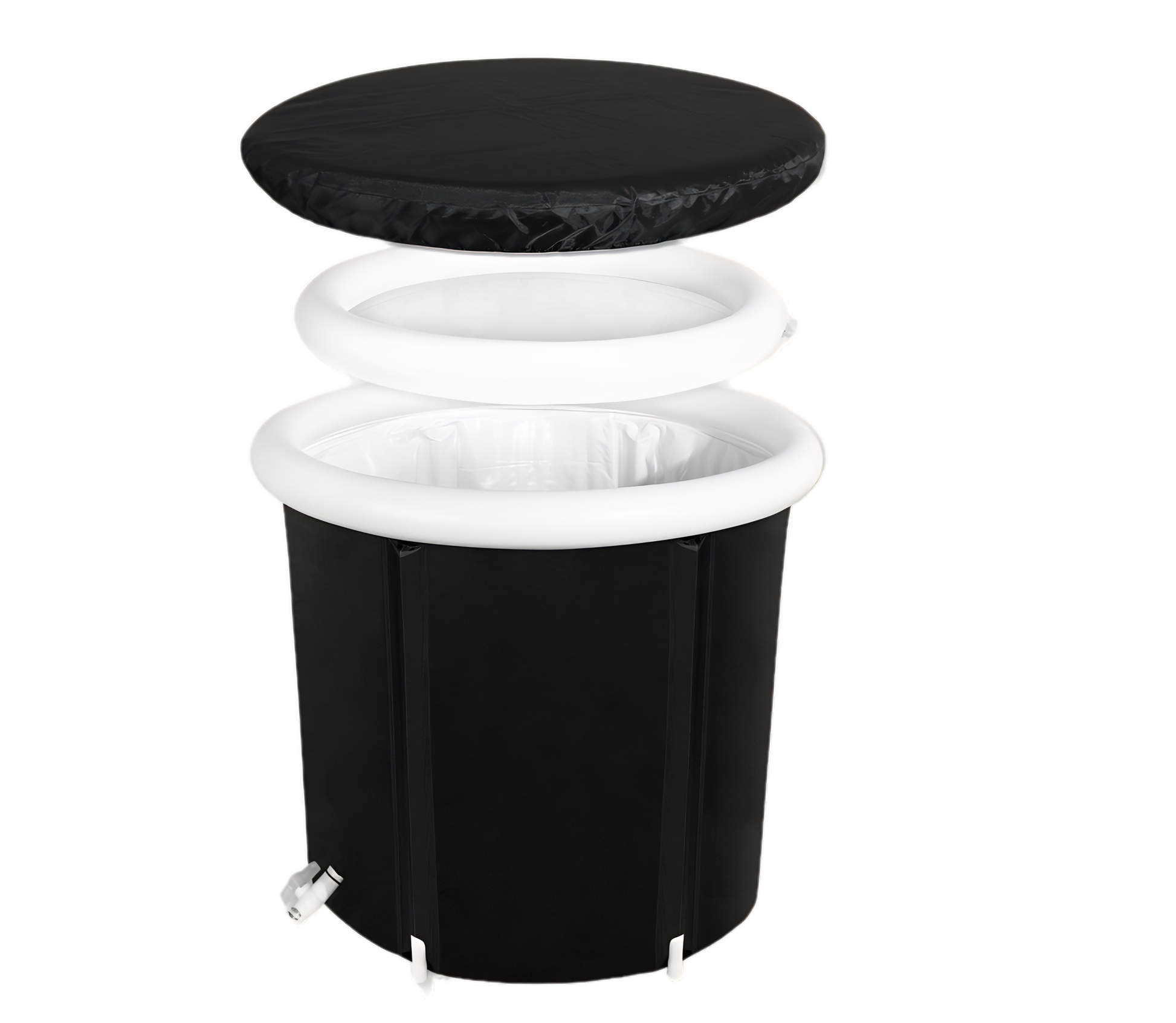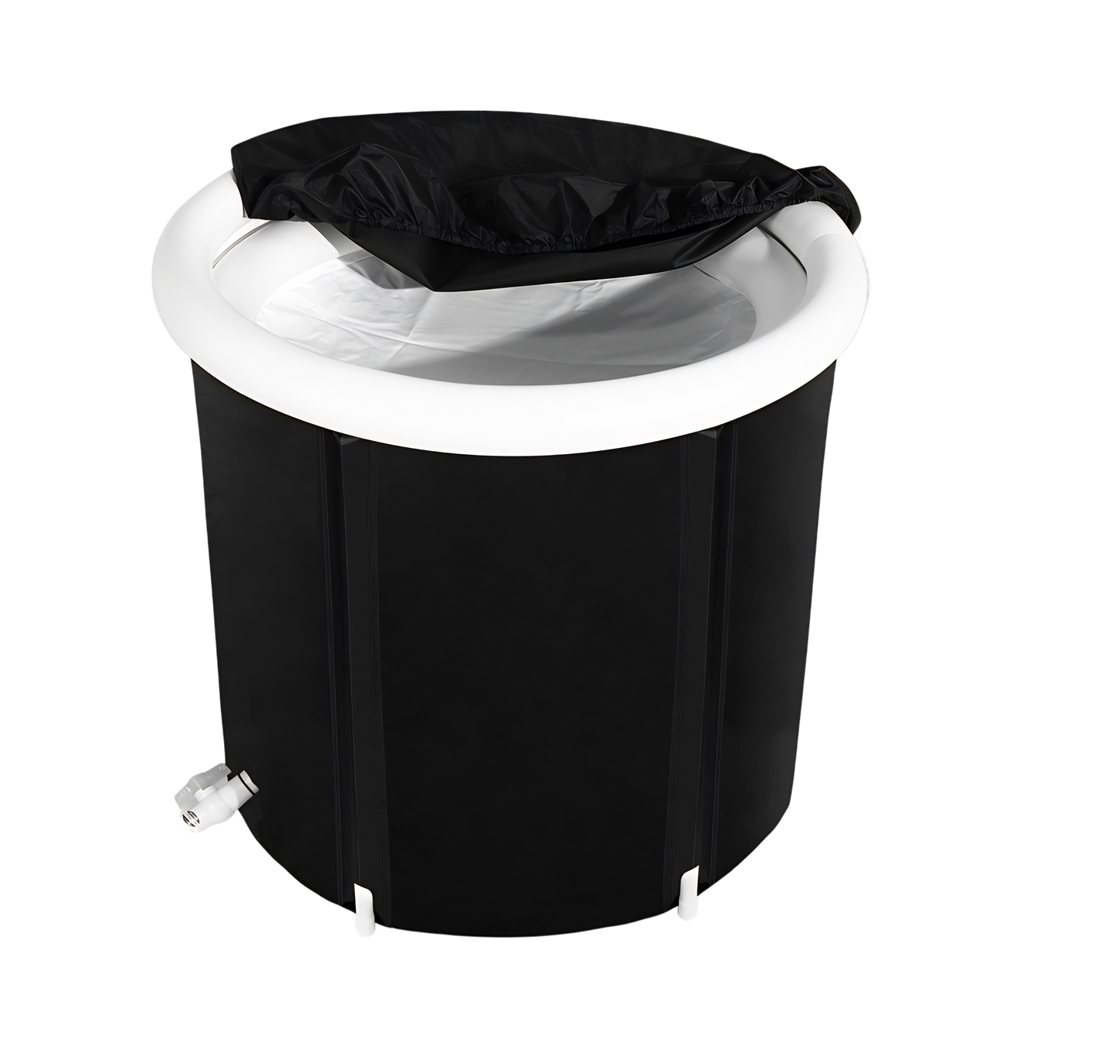Ice baths, also known as cold water immersion, have become increasingly popular among athletes, health enthusiasts, and those seeking to enhance their overall well-being. Advocates of ice baths claim numerous health benefits, including improved muscle recovery, better sleep quality, and increased mental alertness. However, it is crucial to recognize the potential risks and consult a healthcare professional, particularly for individuals with pre-existing cardiovascular conditions. Cold water immersion can temporarily elevate heart rate and blood pressure, necessitating caution.
Key Takeaways:
- Ice baths have been shown to stimulate the Vagus Nerve, lowering heart rate, and improving heart rate variability.
- Advocates believe ice baths offer benefits such as improved muscle recovery, better sleep, and increased mental alertness.
- Individuals with cardiovascular issues should seek professional advice before engaging in cold water immersion.
- Ice baths can temporarily increase heart rate and blood pressure.
- Research is ongoing to fully understand the impact of ice baths on heart health.
The Physiological Response to Ice Baths: How they Affect the Heart

When immersed in cold water, the body undergoes a series of physiological responses that can impact heart health. Cold exposure leads to vasoconstriction, where blood vessels close to the skin surface constrict to reduce heat loss and maintain core body temperature. This vasoconstriction can temporarily increase heart rate and blood pressure. Additionally, cold immersion stimulates the release of hormones such as adrenaline, noradrenaline, and cortisol. Adrenaline and noradrenaline enhance the body's ability to handle stress, while cortisol acts as a stress hormone.
Cold exposure also activates brown adipose tissue (BAT) (Espeland et al., 2022), which burns energy to produce heat. This can have implications for heart health, as the burning of energy by BAT may help regulate body temperature and promote overall cardiovascular function. However, it is important to note that the impact of cold water immersion on heart health is still being researched, and more studies are needed to fully understand the extent of its effects.
In summary, ice baths can elicit physiological responses such as vasoconstriction, hormone release, and activation of brown adipose tissue. These responses may have implications for heart health; however, more research is needed to fully understand the impact of ice baths on cardiovascular function. It is always recommended to exercise caution, especially for individuals with pre-existing cardiovascular conditions, and consult with a healthcare professional before incorporating ice baths into a wellness routine.
Potential Benefits of Ice Baths for Heart Health

Ice baths, also known as cold water immersion, have been gaining attention for their potential benefits on heart health. While more research is needed to fully understand the extent of their impact, there are several ways in which ice baths may contribute to a healthy heart.
One potential benefit is improved blood flow and circulation. When exposed to cold water, blood vessels constrict, leading to an increase in heart rate and blood pressure. This temporary increase in cardiovascular activity can help stimulate blood flow throughout the body, promoting better overall circulation.
In addition to improved circulation, ice baths may also have an anti-inflammatory effect on the blood vessels (Lange et al., 2008). Inflammation in the blood vessels can contribute to cardiovascular disease, and reducing this inflammation may help reduce the risk of heart-related complications.
Furthermore, ice baths can stimulate the release of nitric oxide, a molecule that helps dilate blood vessels. This dilation can improve blood flow and further enhance cardiovascular function. The release of endorphins during the cold therapy can also contribute to stress reduction, which is beneficial for heart health.
| Benefit | Description |
|---|---|
| Improved Blood Flow and Circulation | Ice baths can increase heart rate and blood pressure, temporarily stimulating blood flow and promoting better circulation. |
| Anti-Inflammatory Effect | Cold therapy may reduce inflammation in the blood vessels, potentially lowering the risk of cardiovascular disease. |
| Stimulation of Nitric Oxide Release | Ice baths can trigger the release of nitric oxide, which helps dilate blood vessels and improve blood flow. |
| Stress Reduction | The release of endorphins during ice baths can help reduce stress, which is beneficial for heart health. |
In conclusion, while more research is needed to fully understand the impact of ice baths on heart health, they have the potential to improve blood flow, reduce inflammation, and promote better cardiovascular function. It is important to consult with a healthcare professional before incorporating ice baths into a wellness regimen, especially for those with existing cardiovascular conditions. Taking ice baths safely and gradually increasing exposure can help individuals reap the potential benefits while minimizing risks.
Taking Ice Baths Safely: Tips and Precautions
Cold therapy, such as ice baths, can provide numerous benefits for heart health and overall well-being. However, it is essential to take certain precautions to ensure safety, particularly for individuals with existing cardiovascular issues. By following these tips, you can enjoy the potential benefits of ice baths while minimizing any associated risks.
Consult with a healthcare professional
Prior to incorporating ice baths into your wellness routine, it is crucial to consult with a healthcare professional. They can assess your individual health conditions and provide guidance on how to safely engage in cold therapy. This is especially important if you have any pre-existing heart conditions or concerns.
Start slow and gradually increase
When starting cold therapy, it is recommended to begin with shorter durations and lower temperatures. This allows your body to gradually adjust to the cold stimulus. Over time, you can increase the duration and intensity of your ice baths. Listening to your body and not pushing beyond your limits is key to ensuring a safe experience.
Check out our article which dives deeper into optimal ice bath times for slow gradual increases: Ice Bath Duration: Comprehensive Guide.
Pay attention to your body
During an ice bath, it is important to pay close attention to any signs of discomfort or adverse reactions. If you experience numbness, dizziness, or extreme shivering, it may be an indication that you need to end the session. Everyone's tolerance to cold therapy is different, so it is essential to listen to your body and act accordingly.
| Tips for Taking Ice Baths Safely |
|---|
| Consult with a healthcare professional |
| Start slow and gradually increase |
| Pay attention to your body |
Taking ice baths safely requires a cautious approach and prioritizing personal safety. By consulting with a healthcare professional, starting with lower temperatures and shorter durations, and listening to your body, you can enjoy the potential benefits of cold therapy while minimizing the risk of adverse effects.
Conclusion
Ice baths have surged in popularity as a potential means to enhance heart health and overall well-being. Though further research is necessary to comprehend the full extent of their impact, ice baths have demonstrated potential benefits. They may improve blood flow, decrease inflammation, and promote better cardiovascular function. However, individuals with pre-existing heart conditions should exercise caution and consult a healthcare professional before incorporating ice baths into their wellness routine.
To ensure safety, it is crucial to commence ice baths gradually and increase the duration and intensity over time. Listening to your body's signals and not exceeding personal limits is paramount. Always seek company when taking ice baths, and maintain a safe water temperature range. By adhering to these safety measures, one can reap the potential benefits of ice baths while minimizing any associated risks.
Overall, ice baths offer promising prospects for heart health and improved well-being. However, individual circumstances must be taken into consideration, and professional guidance should be sought. By adopting a mindful and cautious approach, individuals can harness the potential benefits of ice baths and optimize their cardiovascular health.
FAQ
Are ice baths safe for individuals with cardiovascular issues?
It is important for individuals with cardiovascular issues to exercise caution and consult with a healthcare professional before taking ice baths. The increase in heart rate and blood pressure during cold water immersion can pose risks for those with pre-existing heart conditions.
How do ice baths affect heart rate and blood pressure?
Ice baths can temporarily increase heart rate and blood pressure due to the physiological response of vasoconstriction, where blood vessels constrict to reduce heat loss and maintain core body temperature.
Can ice baths improve blood flow and circulation?
Yes, ice baths have the potential to improve blood flow and circulation, which can be beneficial for overall cardiovascular function. Cold water immersion can stimulate the release of nitric oxide, a molecule that helps dilate blood vessels and promote better blood flow.
Do ice baths reduce inflammation in blood vessels?
Ice baths may have an anti-inflammatory effect, which can potentially reduce inflammation in blood vessels. This reduction in inflammation may help lower the risk of cardiovascular disease.
How should I take ice baths safely?
It is important to start slowly and gradually increase the duration and intensity of cold water immersion. Consulting with a healthcare professional is recommended, especially for individuals with cardiovascular issues. Always listen to your body, pay attention to any discomfort or adverse reactions, and never take ice baths alone. Ensuring the water temperature is within a safe range is vital to prevent any potential risks.






